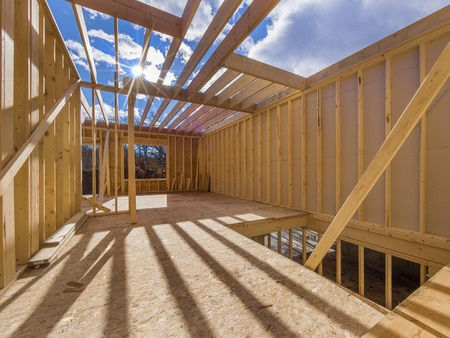24.C Handrails.
24.C.01 A standard handrail must be of construction similar to a standard guardrail (see Section 21.E.01) except that it is mounted on a wall or partition and does not include a midair.
24.C.02 Handrails must have smooth surfaces along the top and both sides.
24.C.03 Handrails must have an adequate handhold for anyone grasping it to avoid falling.
24.C.04 Ends of handrails must be turned into the supporting wall or partition or otherwise arranged so as to not constitute a projection hazard.
24.C.05 The height of handrails must be not more than 38 in (86.3 cm) nor less than 34 in (76.2 cm) from upper surface of handrail to surface of tread, in line with face of riser or to surface of ramp. Existing installations need not be modified if they meet the building code that was in effect at the time the facility was built.
24.C.06 All handrails and railings must be provided with a clearance of approximately 3 in (7.6 cm) between the handrail or railing and any other object.
24.D Floor, Wall, and/or Roof Holes and Openings.
24.D.01 Floor and roof holes/openings are any that measure over 2 in (51 mm) in any direction of a walking/working surface which persons may trip or fall into or where objects may fall to the level below. > See Section 21.G.
Note: Skylights located in floors or roofs are considered floor or roof hole/openings.
24.D.02 All floor, roof openings or hole into which a person can accidentally walk or fall through must be guarded either by a railing system with toeboards along all exposed sides or a load-bearing cover. When the cover is not in place, the opening or hole must be protected by a removable guardrail system or other fall protection system, or must be attended when the guarding system has been removed. > See Sections 21.F and 21.G.
24.D.03 All floor and roof holes through which equipment, materials, or debris can fall must be covered.
24.D.04 Conduits, trenches, and manhole covers and their supports, when exposed to vehicles or equipment, must be designed to carry a truck rear axle load of 2 times the maximum anticipated load.
24.D.05 Every hatchway and chute floor opening must be guarded by a hinged floor- opening cover. The opening must be barricaded with railings so as to leave only one exposed side. The exposed side must be provided either with a swinging gate or offset so that a person cannot walk into the opening. When operating conditions require the feeding of material into a hatchway or chute opening, protection must be provided to prevent a person from falling through the opening.
24.D.06 Wall openings 30 in (76 cm) or more in height and 18 in (48 cm) or more in width from which a fall could occur must be protected with a standard guardrail or equivalent. A toeboard must be provided where the bottom of the wall opening, regardless of width, is less than 4 in (10.1 cm) above the working surface. > See Section 21.F.01.
24.D.07 An extension platform outside a wall opening onto which materials can be hoisted for handling must have a standard railing that meets criteria in Section 21.F.01 of this manual. However, one side of an extension platform may have removable railings to facilitate handling materials, if appropriate fall protection is used.
24.D.08 Roof openings and holes must be provided with covers, guardrail systems or warning lines systems on all exposed sides.
- Roofing material, such as roofing membrane, insulation or felts, covering or partly covering openings or holes, must be immediately cut out. No hole or opening must be left unattended unless covered according to Section 21.G.
- All covers for openings must be identified in accordance with Section 21.G.
- Non-load-bearing skylights must be guarded by a load-bearing skylight screen, cover, or railing system along all exposed sides.
- Workers are prohibited from standing/walking on skylights.
Knowledge Check Choose the best answer for the question.
24-6. Which method to guard floor holes is most likely a safety violation?
You forgot to answer the question!

